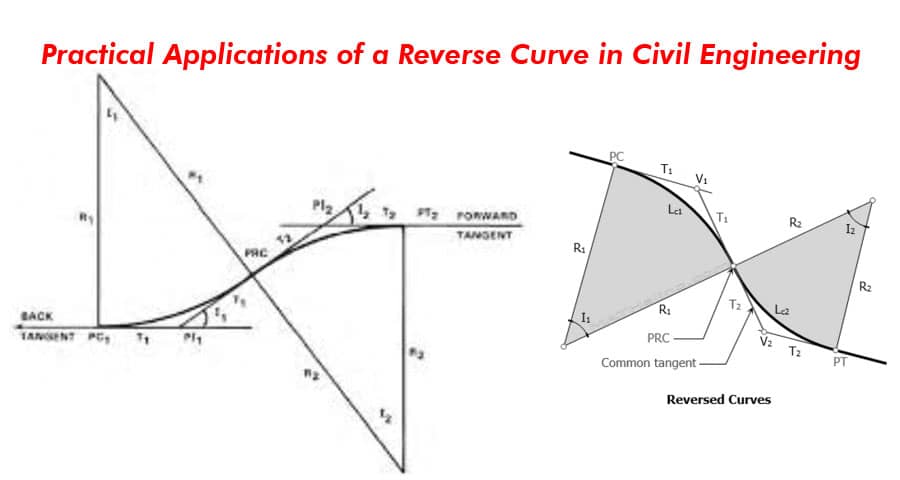Practical Applications of a Reverse Curve in Civil Engineering

Introduction to Reverse Curves
In the realm of civil engineering, reverse curves emerge as a pivotal design element, offering solutions to complex challenges encountered in roadway and transportation infrastructure development. These curves, characterized by their unique geometry, play a crucial role in ensuring the safety, efficiency, and functionality of roads, highways, and railway systems.
Understanding Reverse Curves in Civil Engineering
Definition and Geometry
A reverse curve refers to a section of roadway or railway track that incorporates two consecutive curves in opposite directions, connected by a tangent section. This design creates a smooth transition for vehicles or trains navigating through the curve, minimizing discomfort for passengers and reducing the risk of accidents.
The geometry of a reverse curve involves precise calculations to determine the radii of both curves and the length of the tangent section. Engineers utilize mathematical formulas and advanced modeling techniques to ensure optimal alignment and curvature, adhering to established safety standards and design specifications.
Practical Applications
Highway Design
One of the primary applications of reverse curves is in highway design, where engineers encounter scenarios such as changes in terrain, alignment constraints, or the need to accommodate varying traffic speeds. By strategically implementing reverse curves, engineers can mitigate the effects of sharp turns and enhance the overall driving experience for motorists.
Railway Systems
In the realm of railway engineering, reverse curves find application in the design of tracks, particularly in situations where space constraints or topographical features necessitate complex alignments. These curves enable trains to navigate smoothly around bends, maintaining stability and ensuring passenger comfort throughout the journey.
Advantages of Reverse Curves
Enhanced Safety
The incorporation of reverse curves in roadway and railway design contributes to improved safety outcomes by minimizing the risk of accidents associated with abrupt changes in direction. The gradual transition between curves allows drivers or train operators to maintain better control over their vehicles, reducing the likelihood of skidding or derailment.
Improved Traffic Flow
By facilitating smoother transitions between curves, reverse curves help to optimize traffic flow along highways and railway lines. Vehicles can traverse the roadway with greater ease, minimizing delays and congestion, while trains can maintain consistent speeds without encountering jolts or disruptions in momentum.
Efficient Space Utilization
In situations where space is limited, such as urban environments or mountainous terrain, reverse curves offer a practical solution for maximizing the use of available land while maintaining the necessary curvature for safe and efficient transportation. This efficient utilization of space enables engineers to design roads and railways that fit seamlessly within their surroundings.
Conclusion
In conclusion, reverse curves represent a valuable tool in the arsenal of civil engineers, providing innovative solutions to the challenges posed by roadway and railway design. Through meticulous planning, precise calculations, and strategic implementation, these curves offer a myriad of benefits, including enhanced safety, improved traffic flow, and efficient space utilization. As the field of civil engineering continues to evolve, the practical applications of reverse curves will remain integral to the development of sustainable and resilient transportation infrastructure.
